How to Potty Train Your Child
If you’ve been changing fewer diapers and your child is staying dry for longer, it may be time to introduce them to the world of potty training. Teaching your little ones how to use the toilet not only will give them more independence, but it’s also a significant milestone in their development.
5-Minute Crafts has prepared this guide with the essential steps to follow to help you succeed in this new parenting adventure.
❗ Important: Talk to your doctor if you’ve already potty trained your toddler and they’re still having problems. Also, seek professional help if your child is 4 years or older and hasn’t been potty trained yet.
Make sure your child is ready for potty training.
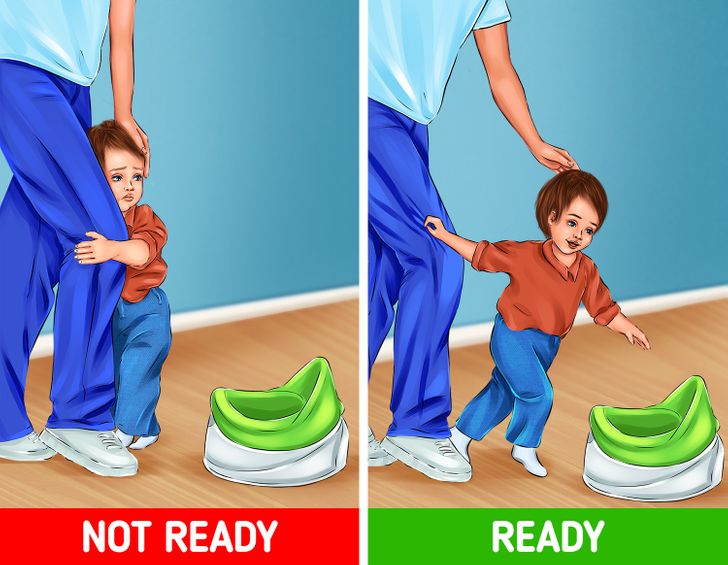
In general, people may wait until their toddlers are between 18 and 24 months old to start potty training. However, every child is different, and they may be ready a bit later. So, to ensure that all the techniques to potty train your child work, look for the following signs as these will tell you if they are ready or not:
- Your child shows signs of interest in using the potty and is willing to be more independent.
- Your child has started to verbalize or show facial expressions about peeing or pooping.
- Your child doesn’t want to be wearing a dirty diaper because they feel uncomfortable.
- Your child stays dry for longer (an hour or 2), which results in changing fewer diapers.
- Your child can follow basic instructions.
- Your child can get on and off the potty and stay seated long enough to pee or poop.
Remember that it’s important not to push this process and wait until your little one is ready. Be patient and let their motivation take the lead, even if you feel eager to start teaching them. Also, keep in mind that accidents may occur, and punishment is not an effective part of this process, as it can discourage your child.
Before you start
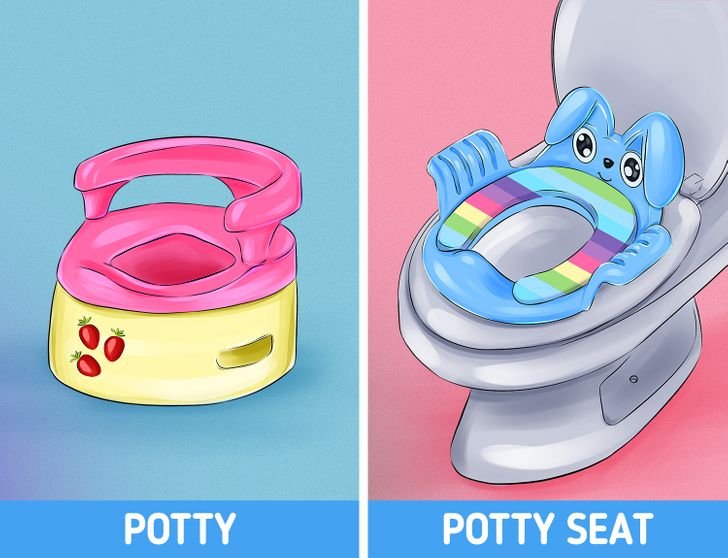
- Get the necessary equipment: Decide whether you want your child to use a potty or a potty seat that you can place securely on the toilet seat — although the first one is easy to move wherever you want and may look less scary. You might want to encourage your child to use both. Get a step or footstool if necessary. At the same time, letting your child choose their own bathroom equipment can make them feel more excited about this learning process.
- Prepare yourself: Think about the words you’re going to use when your child pees or poops. Avoid anything that can sound negative, such as “dirty” or “disgusting.” To have your child feel more relaxed, you can also make up a potty-training song or search for one on the Internet. Sing it as you’re headed to the potty or while your child is seated on it.
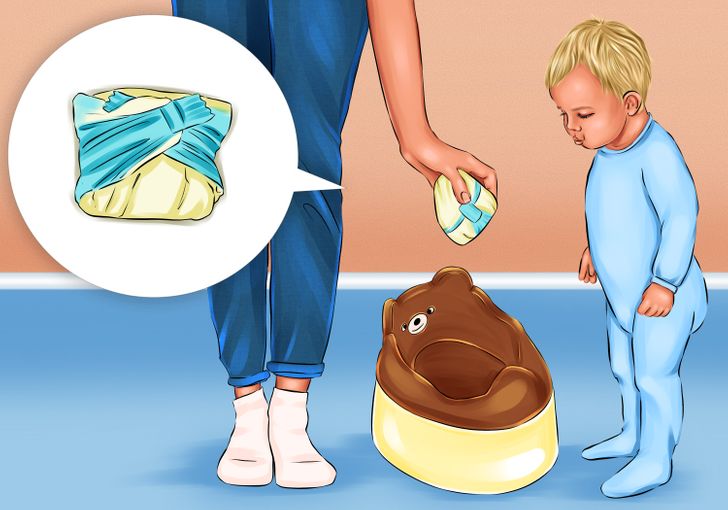
- Prepare your child: Teach your little one some words or phrases related to using the potty or toilet, such as “pee,” “poop,” “I need to go,” etc. It’s also important that your child understands what a potty or toilet is for, so it may be a good idea to put dirty diapers in the potty or let them watch you use the toilet while you explain what is happening.
- Beware of your toddler’s diet: Make sure you include plenty of fiber and water to avoid constipation, which can make potty training harder.
- Choose a convenient location for the potty: The bathroom may seem like the best spot as it will help your child realize that using the potty happens there. However, placing the potty in your child’s bedroom or playroom can give you easy access to it.
Get started with potty training.
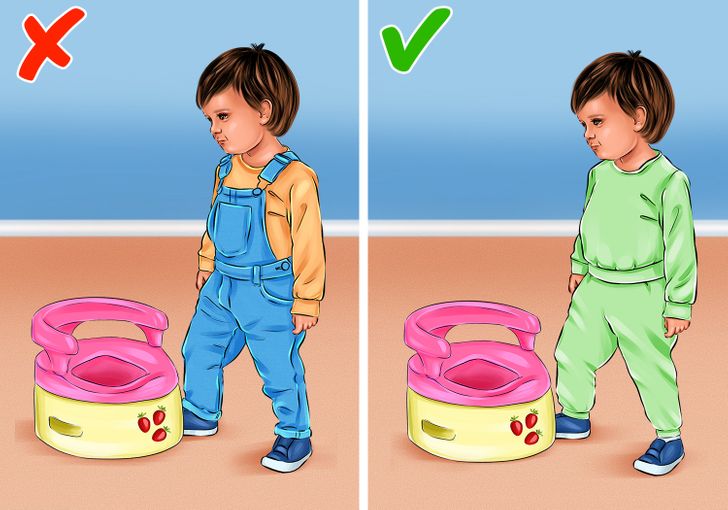
1. Dress your child in the appropriate clothes: Make sure that your toddler wears the right outfit, avoiding clothes that are difficult to take off or that have tricky buttons. Go for underpants, absorbent training pants, or pants with elastic waistbands instead.
2. Practice the pull-down maneuver: Have your child pull down their pants before changing the diaper, and ask them to pull them back up afterward.
3. Teach your little one how to use the potty: Demonstrate for your child how to squat, wipe, and flush through mimicry.
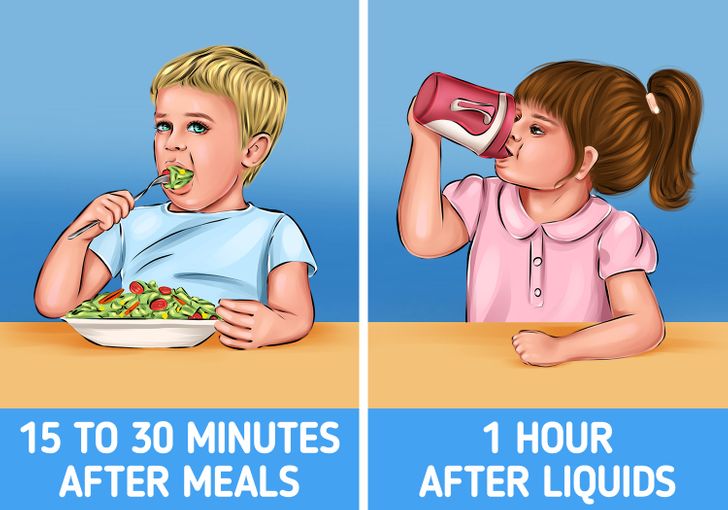
4. Make potty training part of your toddler’s routine: Start this process on a day where you don’t need to leave the house much. Seat them on the potty in the morning after waking up or about an hour after having plenty of liquids. Ask them to use the potty or toilet if there are any signs of discomfort, such as crossing legs, squatting, or grunting.
5. Encourage your child to use the potty within 15 to 30 minutes after eating: This will allow you to take advantage of the natural bowel movement that happens as a response after a meal, also known as the gastro-colic reflex.
6. Help your child feel relaxed and avoid negative vibes: While they’re seated on the potty or toilet, give your little one their favorite book or read a story about going to the bathroom. This will help them pass the time. If your child doesn’t pee or poop after 5 minutes, let them off the potty or toilet. Having them sit on it for too long may feel like punishment.
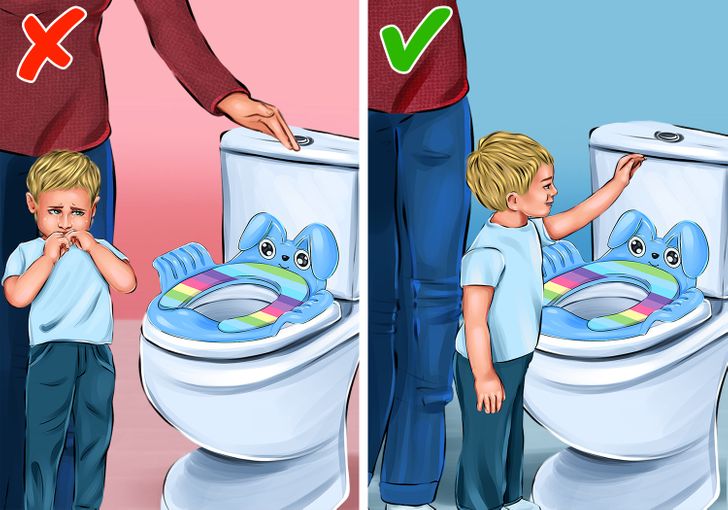
7. Flush later if necessary: If your child is using the toilet, keep in mind that the flushing sound can be scary for them, especially during the initial stages of potty training. Introduce this concept slowly and make a game out of it to ease any negative feelings. Remember that you can always flush later if it’s too soon.
8. Consider praises and rewards: Praise your child for letting you know they have to use the potty, even if nothing happens, as well as for doing a good job. Remind them that going to the toilet means they’re growing up. Try hanging a calendar where your toddler can put stickers on afterward and reduce the rewards as your child makes progress due to their motivation.
9. Don’t forget about hygiene: Help your child wipe their bottom until they learn how to do it themselves. Remember that it should be done from the front to the back. Also, teach your little ones the habit of washing their hands after getting off the potty or toilet, even if they didn’t pee or poop.
Other aspects to consider
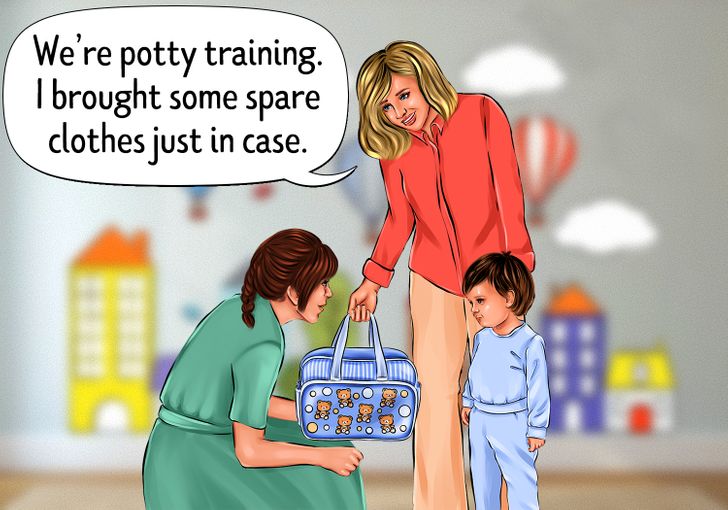
- Delay potty training if you need to: Consider putting off this new skill in situations such as sickness, traveling, having a new baby, crib-to-bed transitioning, and moving to a new place.
- Inform other caregivers about your approach: Make sure that all family members and babysitters know about the process you and your child are going through. Ask them to use the same names for bathroom-related situations and body parts so that your toddler doesn’t get confused.
- Trade diapers for training pants or underwear: After 2 weeks of remaining dry throughout the day, your child may be ready to make this transition. However, it’s essential to let them return to diapers if there are any setbacks.
- Be ready to handle accidents: Avoid scolding or shaming your child. Use phrases such as “It’s okay. Next time you’ll get to the toilet sooner,” and always have a spare change of underwear and clothing, especially at school. Waterproof bags or plastic bags can also be useful for wet clothes.